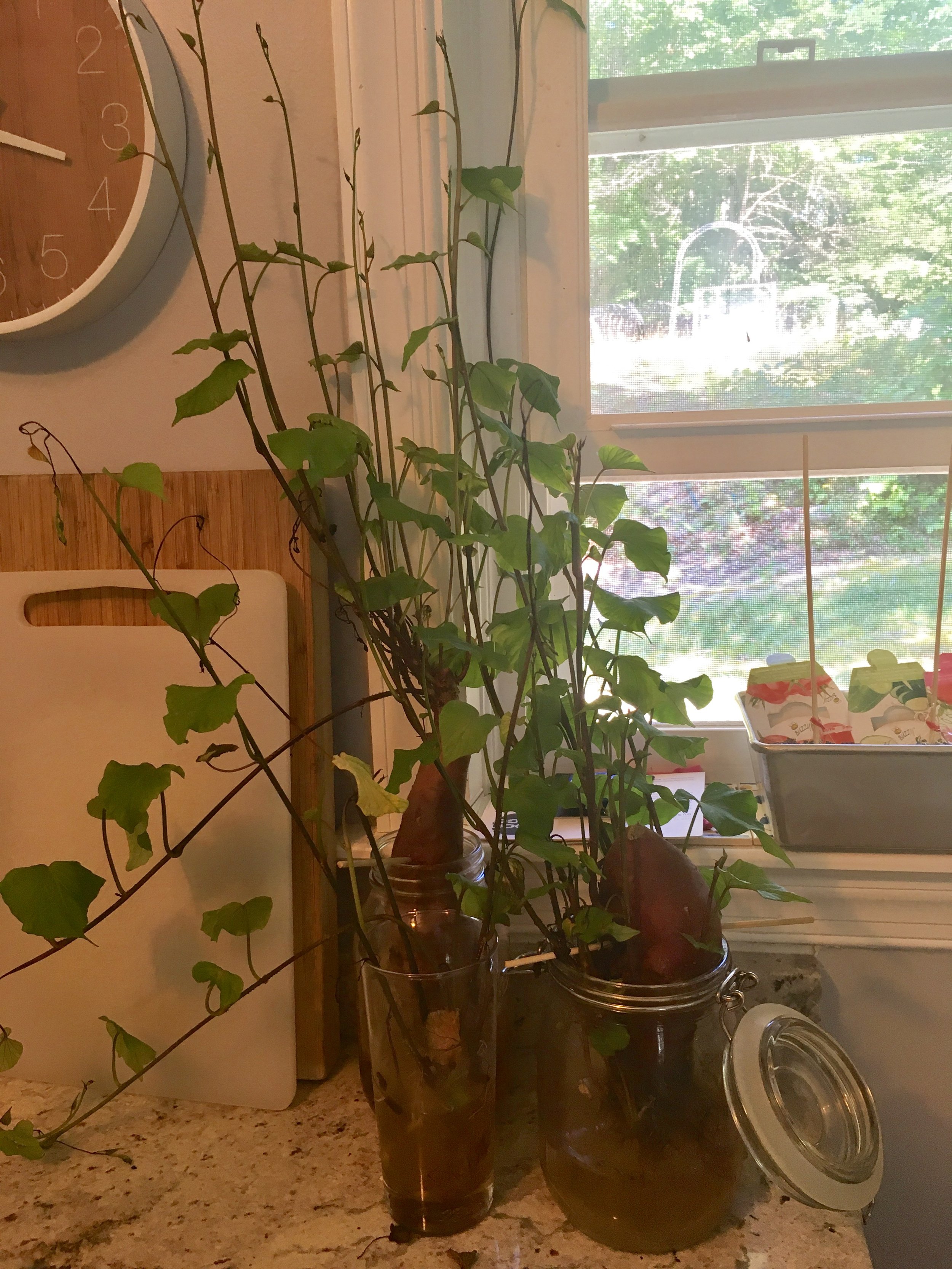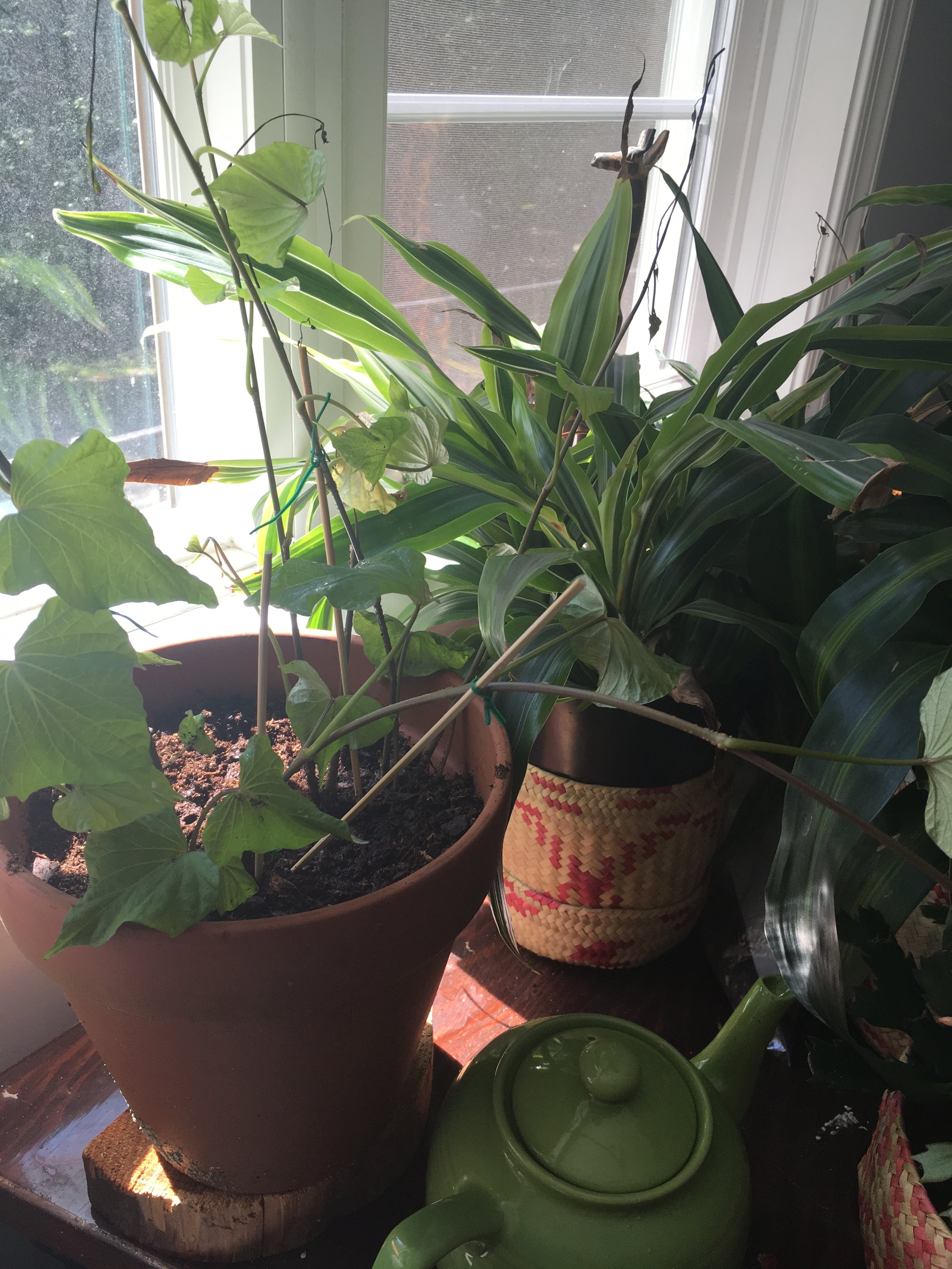It's funny, I left a tiny two bedroom apartment in Brooklyn to live in a farm house in the country set on four acres of land and I still do the majority of my gardening on my countertops and window sills, just as I did in Brooklyn. Then, if I wanted to use my outdoor space, I'd lift the kitchen screen and set a pot on my rickety fire escape. Home to my many green treasures and mason jar experiments.
Old habits die hard. One day I'll plant row upon row of bountiful veggies and fruits. One day, I'll put in the work to weed and harvest en masse. But for now, I'm content to be a kitchen counter farmer and my latest joy has been creating and replanting sweet potato slips.
I am a huge sweet potato fan. Loaded with vitamins A, C, B1, B2, B6, manganese, copper, potassium, fiber, niacin and phosphorus, they are a healthy, clean eating staple.
You can never have enough sweet potatoes! Every inch can be used. The leaves make delicious salads and steamed greens and the potatoes, where do I begin....pies, breads, cakes, cookies, custards, loaded baked, mashed, fries, hash browns, bisque, and on and on and on.....
Since there are so many uses for sweet potatoes, I like to keep them on hand and one of the easiest ways to ensure sweet potato abundance is to sprout and plant the vines yourself.
It is so easy! All you need to do is follow these simple steps and you too, can call yourself a kitchen counter sweet potato farmer!
1) Submerge half of your sweet potato in water and wait for it to bud and sprout. This is so easy and may take a few weeks, so be patient. It's best to use organic sweet potatoes here because they're not treated with preservatives and chemicals, which make it difficult to illicit new growth.
2) Keep your water levels stable. Once you see sprouts and then notice the slips growing, wait until they're about five inches tall before gently removing them from the sweet potato.
3) Submerge the base of your slips into water and wait for roots to sprout. Some of the slips that you pull from your sweet potato will have roots attached, well done, those can go directly into soil.
4) Plant your slips and wait for your vines to flourish. Keep in mind, that sweet potatoes are vines and the vines grow quickly. To help control things, I like to prop some of my vines against stakes.
5) Set your vines in a sunny window and watch them flourish. Harvest your leaves often and add to salads, soups, pestos or sauté like you would spinach.
6) In due time, your sweet potato will grow at the bottom of your pot. If you plant directly in the earth, you'll get larger potatoes.

















